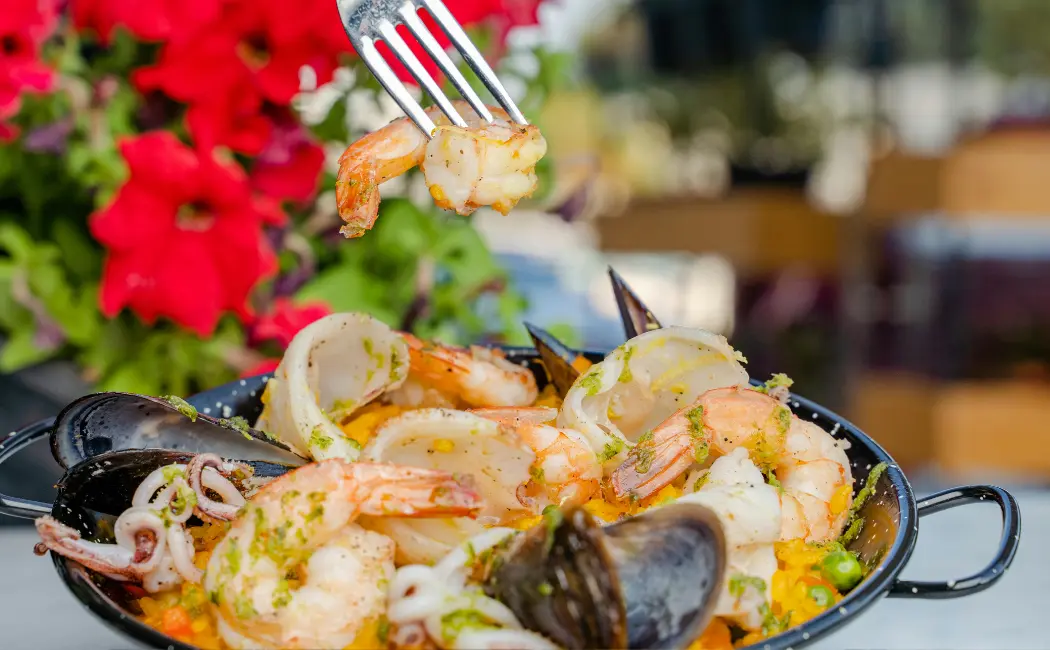Tom Yum Soup, Thailand’s quintessential dish, has seduced the taste buds of food enthusiasts worldwide with its harmonious balance of spicy, sour, sweet, and savory flavors.
This aromatic and refreshing soup has become an integral part of Thai cuisine, showcasing the country’s culinary expertise and cultural heritage.
You May Also Like: Carbonara Confidential: Uncovering the Rich History and Authentic Flavors of Italy’s Beloved Pasta
History and Origins
Tom Yum Soup’s origins date back to the 19th century, during the Rattanakosin Kingdom (1782-1932).
The name “Tom Yum” is derived from the Thai words “tom” (boiled) and “yam” (spicy and sour).
Initially, the soup was a simple, flavorful dish made with boiled shrimp, lemongrass, and chilies.
Authentic Ingredients and Preparation
A traditional Tom Yum Soup recipe requires:
- Prawns or Shrimp: Fresh, succulent seafood.
- Lemongrass: Fragrant, citrusy stalks.
- Galangal: Pungent, earthy rhizome.
- Chilies: Thai bird’s eye chilies or similar varieties.
- Fish Sauce: Salty, umami-rich condiment.
- Lime Juice: Freshly squeezed, tart citrus.
- Mushrooms: Button or oyster mushrooms.
To prepare an authentic Tom Yum Soup:
- Combine prawns, lemongrass, galangal, chilies, and fish sauce in a pot.
- Add mushrooms and boiling water.
- Simmer until flavors meld.
- Add lime juice and adjust seasoning.
Regional Variations
While traditional Tom Yum Soup hails from central Thailand, regional variations exist:
- Tom Yum Goong: Southern-style, with coconut milk and fish balls.
- Tom Yum Nam Khon: Northern-style, with pork or chicken broth.
- Tom Yum Talay: Seafood-rich version, featuring mixed seafood.
Health Benefits
Tom Yum Soup boasts numerous health benefits:
- Antioxidant-Rich: Lemongrass, galangal, and chilies contain antioxidants.
- Anti-Inflammatory: Chilies and fish sauce reduce inflammation.
- Immune System Boost: Citrusy flavors stimulate immunity.
Celebrity Chefs’ Takes
Renowned chefs share their Tom Yum Soup interpretations:
- Nobu Matsuhisa: Adds coconut milk and cilantro.
- Bobby Chinn: Incorporates seafood and Thai basil.
- Andrew Zimmern: Uses shrimp heads for added flavor.
Modern Twists and Innovations
Contemporary chefs experiment with Tom Yum Soup:
- Vegetarian Tom Yum: Replacing seafood with tofu or tempeh.
- Tom Yum Risotto: Fusion of Thai and Italian cuisines.
- Tom Yum Tacos: Southeast Asian-Mexican fusion.
Conclusion
Tom Yum Soup’s captivating flavors and aromas have cemented its position as Thailand’s national dish.
By understanding its history, authentic preparation, and regional variations, we can appreciate the complexity and beauty of this iconic spicy soup.
References
- “Thai Cooking” by David Thompson.
- “Tom Yum Soup: A Recipe’s Evolution” by The Bangkok Post.
- “The Essentials of Thai Cooking” by Nongkran Daks.
Fact Box
- Originated in 19th-century Thailand.
- Name “Tom Yum” derived from Thai words “tom” and “yam.”
- Traditional ingredients: prawns, lemongrass, galangal, chilies, fish sauce, and lime juice.
- Regional variations exist throughout Thailand.
- Rich in antioxidants, anti-inflammatory properties, and immune system benefits.










